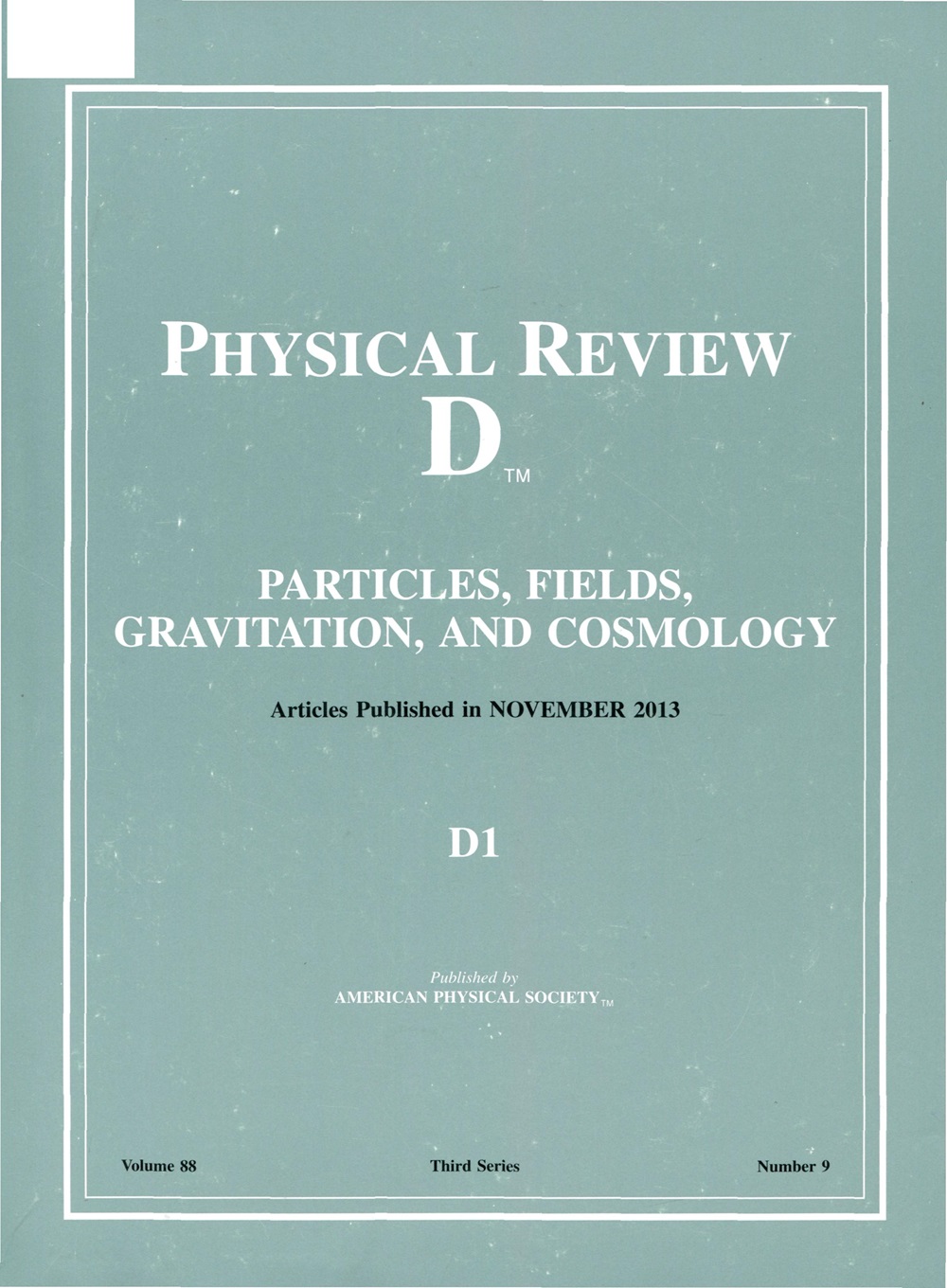Collinear parton dynamics beyond Dokshitzer-Gribov-Lipatov-Altarelli-Parisi framework
IF 5
2区 物理与天体物理
Q1 Physics and Astronomy
引用次数: 0
Abstract
Renormalization group evolution equations describing the scale dependence of quantities in quantum chromodynamics play a central role in the interpretation of experimental data. Arguably the most important evolution equations for collider physics applications are the Dokshitzer-Gribov-Lipatov-Altarelli-Parisi (DGLAP) equations, which describe the evolution of a quark or gluon fragmenting into hadrons, with only a hadron identified at a time. In recent years, the study of the correlations of energy flow within jets has come to play a central role at collider experiments, necessitating an understanding of correlations, going beyond the standard DGLAP paradigm. In this paper we derive a general renormalization group equation describing the collinear dynamics that account for correlations in the fragmentation. We compute the kernel of this evolution equation at next-to-leading order, where it involves the 1→3 splitting functions, and develop techniques to solve it numerically. We show that our equation encompasses all previously known collinear evolution equations, namely DGLAP and the evolution of multihadron fragmentation functions. As an application of our results, we consider the phenomenologically relevant example of energy flow on charged particles, computing the energy fraction in charged particles in超越Dokshitzer-Gribov-Lipatov-Altarelli-Parisi框架的共线局部动力学
描述量子色动力学中量的尺度依赖性的重整化群演化方程在解释实验数据中起着中心作用。可以说,对撞机物理应用中最重要的演化方程是Dokshitzer-Gribov-Lipatov-Altarelli-Parisi (DGLAP)方程,它描述了夸克或胶子分裂成强子的演化过程,每次只识别一个强子。近年来,射流内能量流的相关性研究已经在对撞机实验中发挥了核心作用,需要对相关性的理解,超越了标准的DGLAP范式。在本文中,我们推导了一个通用的重整化群方程,描述了在碎片中考虑相关性的共线动力学。我们计算了次阶演化方程的核,其中涉及到1→3分裂函数,并开发了数值求解的技术。我们发现我们的方程包含了所有已知的共线演化方程,即DGLAP和多强子碎片函数的演化。作为我们结果的一个应用,我们考虑了带电粒子上能量流的现象学相关的例子,计算了带电粒子中e+e−→强子在次到次到先的顺序中的能量分数。我们的结果是朝着提高对射流共线动力学的理解迈出的重要一步,在射流子结构中有广泛的应用,从多强子相关性的研究,到包容性(子)射流产生的描述,以及现代部分子阵雨的进步。2025年由美国物理学会出版
本文章由计算机程序翻译,如有差异,请以英文原文为准。
求助全文
约1分钟内获得全文
求助全文
来源期刊

Physical Review D
物理-天文与天体物理
CiteScore
9.20
自引率
36.00%
发文量
0
审稿时长
2 months
期刊介绍:
Physical Review D (PRD) is a leading journal in elementary particle physics, field theory, gravitation, and cosmology and is one of the top-cited journals in high-energy physics.
PRD covers experimental and theoretical results in all aspects of particle physics, field theory, gravitation and cosmology, including:
Particle physics experiments,
Electroweak interactions,
Strong interactions,
Lattice field theories, lattice QCD,
Beyond the standard model physics,
Phenomenological aspects of field theory, general methods,
Gravity, cosmology, cosmic rays,
Astrophysics and astroparticle physics,
General relativity,
Formal aspects of field theory, field theory in curved space,
String theory, quantum gravity, gauge/gravity duality.
 求助内容:
求助内容: 应助结果提醒方式:
应助结果提醒方式:


